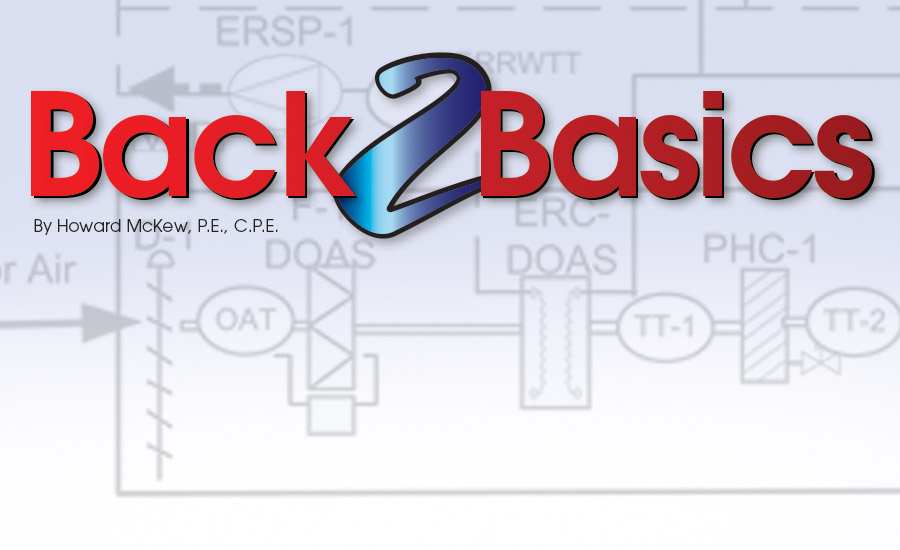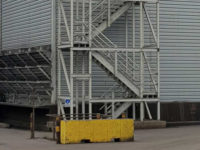Project Delivery Method: Design-Bid-Build (D-B-B)
Owner Team: Building owner, owner representative (consultant), and facility manager (outsource staff).
Project Delivery Team: D-B-B project manager; job superintendent; mechanical-electrical coordinator; and the design team, including architect, HVAC, plumbing, electrical, structural, fire protection, and security consultants.
HVAC Project Team: HVAC supervisor; HVAC refrigeration technician subcontractor; BAS technician subcontractor; third-party commissioning consultant (CxC); and the testing, adjusting, and balancing (TAB) technician subcontractor.
Project Type: Renovation of shell and core and tenant fit-out
References: 2018 ASHRAE Handbook – Refrigeration; 2019 ASHRAE Handbook – HVAC Applications; 2020 ASHRAE Handbook – HVAC Systems and Equipment; and Reference to the codes and standards located in the back of each ASHRAE Handbook for additional reference.
Other References: ASHRAE Humidity Control Design Guide for Commercial & Institutional Buildings; ASHRAE Indoor Air Quality Guide: Best Practice for Design, Construction, and Commissioning; ASHRAE Design Guide for Dedicated Outdoor Air Systems; ASHRAE Standards 15 and 34, Refrigeration; ASHRAE Standard 55, Thermal Environmental Conditions for Human Occupancy; ASHRAE Standard 62.1, IAQ; ASHRAE Standard 90.1, Minimum Energy Standards; and ASHRAE Standard 202, Commissioning Process for Buildings & Systems.
DESIGN INTENT DOCUMENT
- The HVAC system selection and design intent are based on the process outlined in ASHRAE Handbook 2020, Chapter 1, “HVAC System Analysis and Selection,” and include the owner building program goals and additional goals, system constraints, and constructability constraints.
- The finalized system selection shall be decentralized HVAC systems and terminal fan coil units (FCUs), and specialized systems shall include general exhaust, toilet exhaust, and kitchen exhaust.
- The program and project goals shall be functional goals — refer to the 2000 ASHRAE Handbook, Chapter 1. Budget goals include operating cost and life cycle cost, and management goals encompass property management, outsource mechanical and electrical services, and primary equipment service contracts.
- Available utilities include propane gas, electrical power, and the BAS system.
- Heating systems consist of six variable refrigerant flow (VRF) heat recovery systems integrated with six VRF heat recovery air conditioning systems.
- Ventilation includes three dedicated outdoor air systems (DOAS) with minimum outdoor air to 100% outside air, energy recovery (air–to-air) wheel, electric humidifier, VRF heating and cooling, and variable air volume (VAV).
- Other air systems shall include general exhaust, toilet exhaust, and kitchen exhaust.
- Air filters shall be prefilter MERV 8 and final filter MERV 14.
- Terminal units shall be VRF FCU and cabinet unit heaters at entrances.
DESIGN CRITERIA DOCUMENT
- The HVAC design criteria shall be in sync with the project delivery method and the owner’s building program requirements.
- The design criteria shall be based on ASHRAE 90.1 and state energy code compliance for outdoor air temperature compliance.
- The utility shall be electrical power to the VRF heat recovery systems to serve the new VRF FCU replacements at one FCU per 800 square feet of space served.
- Demolition and removal of existing all-air systems with VAV air distribution implemented to the VAV terminals and fan-powered terminals.
- The new VRF systems shall be 6-40 ton air-cooled VRF condenser/compressors heat recovery systems.
- The DOAS systems shall be low-velocity supply air ductwork with general exhaust ducted through the DOAS unit’s energy recovery wheel and exhausted to the outdoors.
- The new automatic controls shall replace the existing BAS system.
- Conceptual/Schematic Phase General Notes: The HVAC design engineer shall provide system flow diagrams with these three documents along with automatic temperature control (ATC) sequences of operation.
- The HVAC design engineer shall include an electrical data sheet to coordinate with the electrical design engineer, plumbing data sheet to coordinate with the plumbing design engineer, and equipment and distribution weights to coordinate with the structural design engineer.
To see this month’s B2B quiz, click here.
To see the answers to this month’s B2B quiz, click here.





